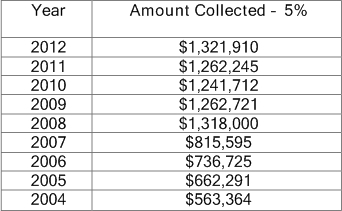ECONOMIC VITALITY FOR THE COUNTY
-
The recently completed Chautauqua 20/20 Plan calls the county “A premier place to visit, learn, conduct business, and be proud to call home”, and focuses on the county’s many natural, cultural and recreational resources
-
Chautauqua County’s scenic landscapes and natural resources are among its greatest strengths and of key importance to the quality of life and the economy
-
Year-round recreation opportunities are a major strength of Chautauqua County
-
According to the county website, “the manufacturing sector provides the base for the county's economy with important and growing contributions from the retail, service, and tourism sectors
TOURISM
- Chautauqua County has a five percent (5%) occupancy or bed tax for the rental of lodging units within the County
- Three fifths (3%) of this tax is utilized to increase tourism, conventions, trade shows special events and other directly related and supporting activities in the County
- The remaining (2%) bed tax is utilized solely for the enhancement and protection of lakes and streams in the County
- Bed tax revenue received in 2012 amounted to $1,321,910
- The amount collected has more than doubled since the county instituted the occupancy tax in 2004
OCCUPANCY TAX RECEIPTS – CHAUTAUQUA COUNTY

*Includes non exempt lodgings in Chautauqua Institution
Source: Financial Analyst to CC Legislature
Source: Financial Analyst to CC Legislature
- Chautauqua County tourism sales resulted in $238 million in traveler spending (The Economic Impact of Tourism in New York - commissioned by the NYS Association of CVB's)
- Chautauqua County represents 48% of the Chautauqua-Cattaraugus-Allegany region’s tourism sales
- In total, tourism in the region is a $493 million industry, sustaining 10,885 jobs
- Of the almost $500 million travelers spent in the region, lodging and restaurants each comprised 21% of all spending and rental and upkeep of second homes contributed 23% to the total
- Annually, Chautauqua County received over $15 million in local taxes from 2009, to 2011, while state taxes collected in Chautauqua County for 2011 totaled over $14 and a half million dollars
- Tourism saw a 6.7% increase in traveler spending between 2010 and 2011, a 4.4% increase in local taxes and a 4.9% increase in state taxes
- To read the full report: http://www.tourismeconomics.com/docs/ILNY_Impact_Executive_Summary.pdf
CHAUTAUQUA LAKE
- Approximately 17 miles long and 2 miles wide at its greatest width, with over 40 miles of shoreline of which all but 2.6 miles are privately owned
- The lake's name has various meanings with the most common translation being Bag Tied in the Middle, referring to the narrow portion between Stow and Bemus Point shore line halfway down the lake
- Jamestown is at the southern end of the Lake and the Village of Mayville is at the northern end
- Chautauqua Lake is known worldwide for its excellent fishing and sailing, as well as for being the home of the world famous Chautauqua Institution
CHAUTAUQUA INSTITUTION
- The Institution is a not-for-profit, 750-acre educational center beside Chautauqua Lake where approximately 7,500 persons are in residence on any day during a 9-week season, and a total of over 142,000 attend scheduled public events
- Over 8,000 students enroll annually in the Chautauqua Summer Schools which offer courses in art, music, dance, theater, writing skills and a wide variety of special interests
- The Institution, originally the Chautauqua Lake Sunday School Assembly, was founded in 1874 as an educational experiment in out-of-school, vacation learning
- It was successful and broadened almost immediately beyond courses for Sunday school teachers to include academic subjects, music, art and physical education
THE WORLD’S LEARNING CENTER BRAND
- Done in July of 2007 by the firm Destination Development
- That report states, “The primary goal of the tourism industry is to bring more cash into the local economy…..you want to entice them into your shops, your cafes, espresso stands, restaurants, galleries, B&Bs, hotels, ultimately opening their wallets to make purchases. That is what helps your local economy, your small merchants, your hoteliers, and your tax coffers.”
- The report goes on to state that “experience-based tourism is alive and is the future of tourism.”

- Chautauqua Institution was identified as a “ primary lure” in this report, which then goes on to highlight “diversionary activities” – things visitors can do closer to home, but will do while in the area
- As a result of this report, the County is promoting the World’s Learning Center brand and trying to expand the tradition of the Chautauqua education movement through other year round leisure learning opportunities for visitors
AGRICULTURE
- With 1557 commercial farms (1997), 15,500 acres of grapes, and eight wineries, Chautauqua County has more farms and produces more grapes than any other county in New York State
For more information about economic development efforts see:
http://chautauqua.ny.us/departments/planning/Pages/default.aspx
http://chautauqua.ny.us/departments/planning/Pages/default.aspx
For a complete list of capital projects for 2010 see: http://www.planningchautauqua.com/pdf/planningboard/2010%20Capital%20Projects%20Rpt.pdf
Like many small, rural communities with a declining population, high taxes and poverty levels, the county is focused on trying to remain economically viable
